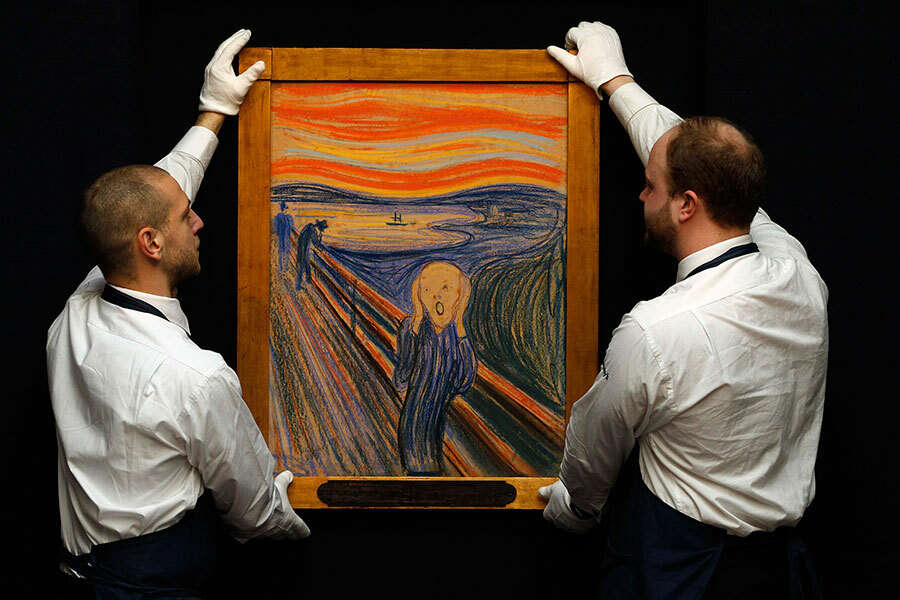Panic Attacks: Symptoms and Treatment

Flush of blood to the face, a sensation of heat, muscle trembling all over the body, fear. .. This pattern is observed when a person is afraid.Surely everyone in this life had similar situations.But what if there is no obvious danger and a threat to life, and a person for no such reason has such attacks of fear.Such a condition in psychiatry was called panic disorder.
Table of Contents: Causes Causes Symptoms Diagnosis Differential Diagnosis Consequences of Panic Disorder How to Get Rid of Panic Attacks Medication for Panic Attacks PsychotherapyCauses of
Panic is a sudden, intense fear.People who at least once experienced a panic attack( and this according to statistics of 20% of the total population) are so impressed by what happened that they remember this state for a long time.In the fine arts, perhaps no one could better portray panic fear than Edvard Munch.His painting "Scream" depicts a man with a grimace of overwhelming horror on his face, he holds his head with his hands, as if he does not know how to get rid of sudden fear and anxiety.The surrounding background looks menacing, and everything blurs before your eyes.This picture gives an idea of what a person feels during a panic attack.
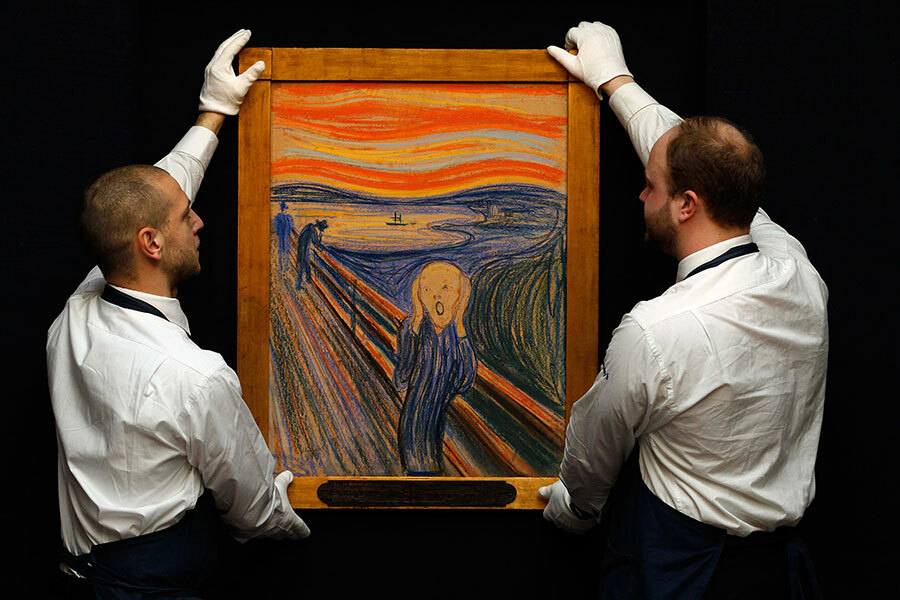
Many factors play a role in the development of panic attacks: biological, physical, psychological.An attack of fear in a panic disorder often occurs suddenly.Not only are some unpleasant thoughts and events capable of causing an attack, but even a certain situation, situations can unconsciously be associated with a person with exciting experiences.When something like this happens, the human brain receives a signal.And he perceives the information received as a call to action.There is a release of catecholamines into the blood.Hormones narrow the blood vessels, cause the heart to beat faster, the person experiences anxiety.The sudden appearance of unfounded such symptoms greatly frightens a person.Awareness and experience of fear in connection with this provokes an even greater production of catecholamines.So a vicious circle of panic attack is formed.
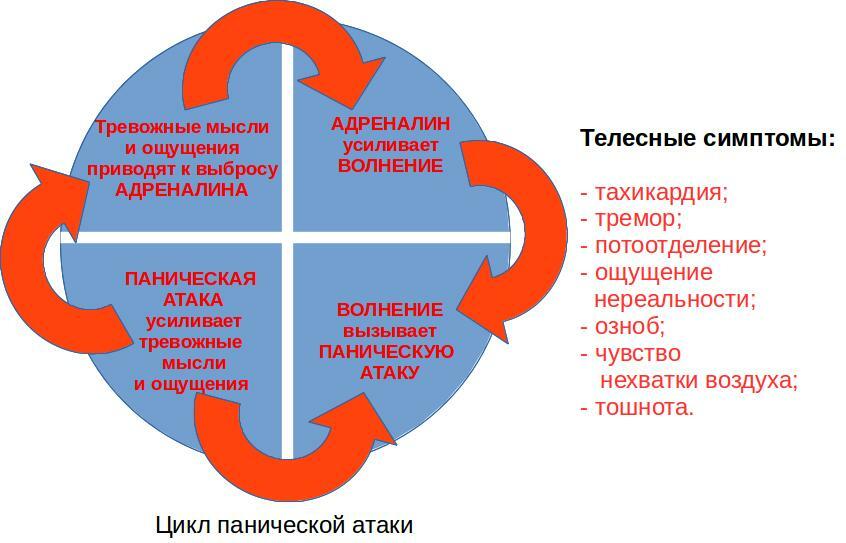
People with certain personality traits tend to develop a panic disorder.So, many women suffering from panic attacks have a hysterical accentuation of personality.They are characterized by emotional lability, as well as a tendency to demonstrative behavior.Among the stronger sex with panic attacks, male hypochondriacs, who are puzzled by health and are constantly listening to their health, are more likely to encounter.
Symptoms of panic attack
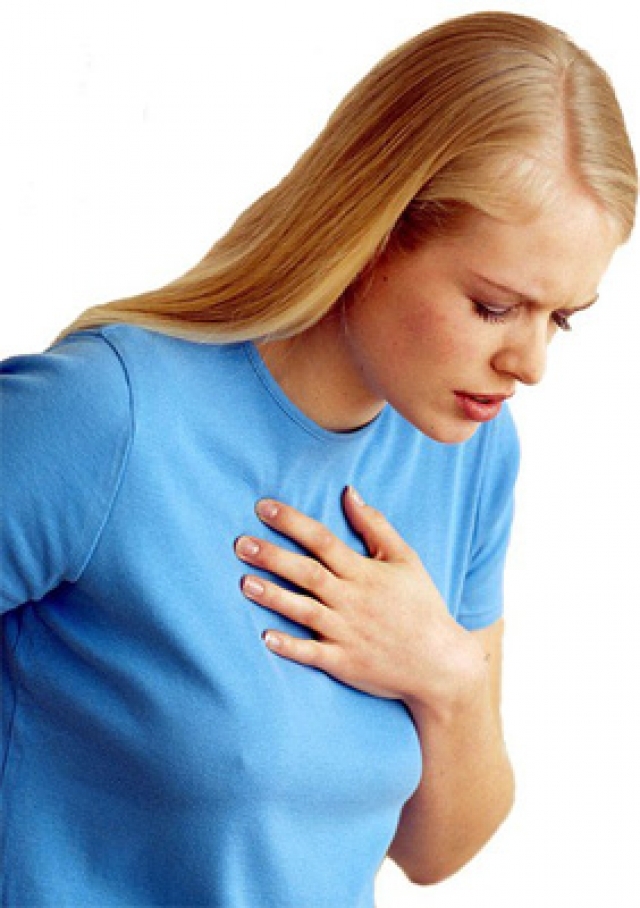 A panic attack occurs suddenly.The person sharply throws in sweat, he feels a fever or a chill.Hands tremble, heart pounding, pain in the chest area may occur.It is difficult for a person to breathe, breathing becomes frequent and deep.As a result, hyperventilation develops.This condition leads to a decrease in the amount of carbon dioxide( CO2) in the blood, as well as an increase in ph blood.Under such conditions, oxygen acquires maximum affinity with hemoglobin.The dissociation of oxygen with hemoglobin is disturbed and as a result, the body tissues do not receive O2 in the required volume - hypoxia develops.In hypoxia, a person feels dizzy, numb, anxious, anxious.It turns out that hyperventilation further aggravates the course of panic attacks.
A panic attack occurs suddenly.The person sharply throws in sweat, he feels a fever or a chill.Hands tremble, heart pounding, pain in the chest area may occur.It is difficult for a person to breathe, breathing becomes frequent and deep.As a result, hyperventilation develops.This condition leads to a decrease in the amount of carbon dioxide( CO2) in the blood, as well as an increase in ph blood.Under such conditions, oxygen acquires maximum affinity with hemoglobin.The dissociation of oxygen with hemoglobin is disturbed and as a result, the body tissues do not receive O2 in the required volume - hypoxia develops.In hypoxia, a person feels dizzy, numb, anxious, anxious.It turns out that hyperventilation further aggravates the course of panic attacks.
A characteristic symptom of the attack is a feeling of great fear, horror, anxiety.This sensation can lead to motor anxiety.The person starts to rush about trying to somehow ease his condition.
During the attack, there are syndromes of impaired perception: derealization and depersonalization. The derealization of is characterized by a changed perception of the world around us.Everything around starts to seem suddenly strange, unusual.Often surrounding objects seem more faded or vice versa bright than they really are.The perception of the real dimensions of objects can vary.The surrounding world is perceived, as if through some kind of haze and it seems illusory.
With , the depersonalization of results in a changed perception of self.During an attack a person seems to think that he is different, not as usual.Own parts of the body, the voice may seem alien.Man seems to lose the ability to identify his own feelings with him.Such changes in self-identification lead to fear of losing control over oneself.
When such an attack in a person develops for the first time, due to the lack of experience of living similar situations, it starts to think that these are signs of some serious illness.A person is so frightened by the abnormality of what is happening that he thinks he is dying of a sudden heart disease.Others, it seems, are literally going crazy.
The attack on average lasts five to ten minutes, but it can take a whole hour.After a panic attack, there is a strong weakness.There is also an easing of the stool and profuse urination.
After a panic attack, a person is in constant thinking about what happened, fixes attention to well-being.This behavior can lead to panic attacks in the future.
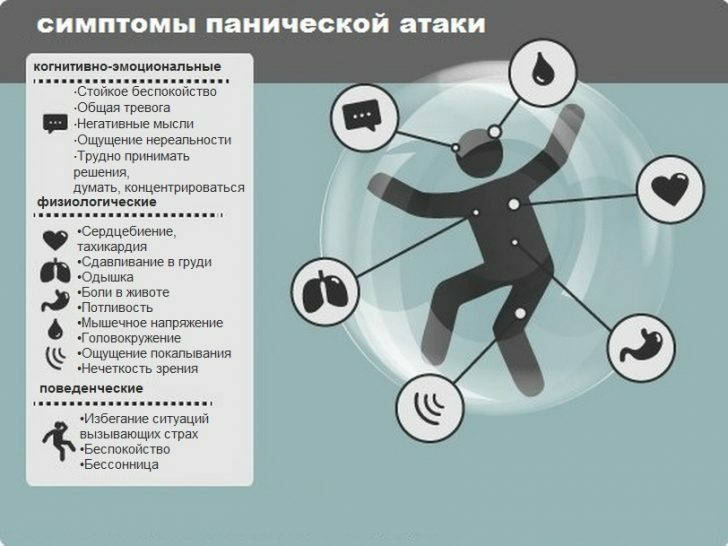
Panic disorder is often accompanied by agoraphobia .This is the fear that arises when staying away from home, in a congestion of a large number of people, public places, transport.Agoraphobia often develops after a panic attack that occurred in any of these situations.As a result, a person is formed fear again to be in such conditions, places from which he can not leave in case of a panic attack.Agoraphobia leads to the fact that people tend to stay at home most of the time, thereby becoming increasingly isolated from the outside world.
The frequency of panic attacks in panic disorder may be different: from several a day to several a year.It is noteworthy that seizures can develop during sleep.So, a person in the middle of the night wakes up in horror and cold sweat, not understanding what is happening to him.
Diagnosis
Panic disorder belongs to the group of anxiety disorders. The diagnosis can be confirmed if the patient has the following criteria from the list proposed by DSM-IV:
A) 1. Recurring attacks of panic attacks.
- For a month, there was at least one attack of panic attack, which was accompanied by:
- Concern about the attack;
- Concern about the consequences of an attack( loss of control, fear of death, fear of an incurable disease, fear of going insane);
- Expressed behavioral changes caused by panic attacks.B) Presence( or absence) of agoraphobia.
- .
C) Symptomatic symptoms are not due to physical illnesses and are not caused by exposure to chemicals.
- D) The existing symptomatology can not be explained within another mental disorder.
Differential diagnosis
If a person is worried about panic attacks, first of all, the presence of somatic diseases should be excluded.In thyrotoxicosis, thyroid hormones are produced in increased amounts.These hormones have a catecholamine-like effect.With thyrotoxicosis, people become restless, anxious, irritable, emotionally labile.Also characteristic is an increase in heart rate, sweating, trembling in the hands, which is very similar to a panic attack.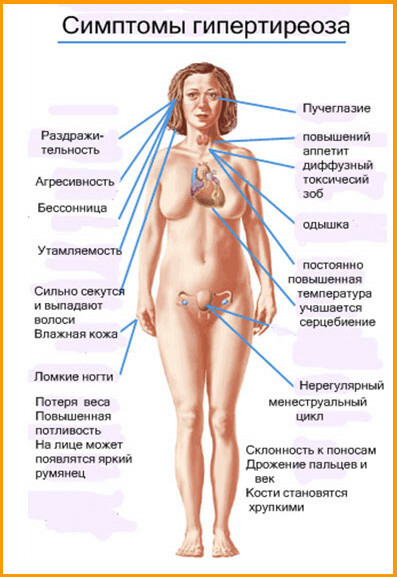
Almost 40% of patients with pheochromocytoma have sympathoadrenal crises( panic attacks).It is a tumor of the adrenal medulla.Progression of the disease leads to an increase in the secretion of catecholamines.The disease manifests itself in the form of rapid heartbeats, sweating, irritability, anxiety, increased blood pressure.It is worth noting that pheochromocytoma often remains unrecognizable.
Similar symptoms of panic attacks may occur in patients with certain cardiovascular diseases.So, paroxysmal tachycardia is characterized by a rapid heart rate, constricting pains in the heart, dizziness, noise in the ears.Paroxysm of supraventricular tachycardia can be accompanied by vegetative dysfunction: sweating, nausea.After an attack, weakness and polyuria develop.
During the hypertensive crisis, increased pressure, chest pain, shortness of breath, trembling of hands, sweating, the appearance of anxiety, anxiety.
The disease is often combined with other mental disorders.Thus, in 55% of cases, panic disorder is accompanied by recurrent depression.It is noteworthy that in most cases, depression manifests panic attacks.Less often, panic attacks occur against the background of the existing depression.
In addition to all of the above, panic attacks can be triggered by taking psycho-stimulating substances( caffeine, drugs, alcohol).
Consequences of panic disorder
The panic disorder itself does not pose any threat to life.But the disease in severe form can strongly poison the social life of a person. Among such consequences it should be noted:
-
 Social isolation;
Social isolation; - The origin of phobias( including agoraphobia);
- Hypochondria;
- Emergence of problems in personal and professional spheres of life;
- Violation of interpersonal relationships;
- Development of secondary depression;
- Appearance of chemical dependencies.
These effects significantly impair the quality of life.All this can be avoided if you contact a doctor in time and treat yourself.
How to get rid of panic attacks
Recommended to read:Treatment of panic disorder should be treated in a comprehensive manner.This is a mental disorder, which you need to correct with the help of psychotherapy.To stop panic attacks, eliminate anxiety and depressive phenomena, certain medications may be prescribed.
Medical treatment of panic attacks
In the treatment of the disorder, tranquilizers and antidepressants are used.Tranquilizers have a smear to use for relief of attacks.It is expedient to prescribe fast-acting benzodiazepines, such as diazepam, lorazepam, at medium therapeutic doses.The use of drugs in this group can eliminate the symptoms of a panic attack fifteen to thirty minutes after ingestion.However, frequent use of benzodiazepines leads to the development of tolerance to the average therapeutic doses of the drug.In addition, there is a risk of drug dependence.To stop the panic attack, beta-blockers( metoprolol) are also used.
Antidepressants from the SSRI group( fluoxetine, paroxetine, citalopram, sertraline) are prescribed to eliminate anxiety, agoraphobia, and prevention of recurrent seizures.The dose of the drug the doctor picks up gradually, starting with the minimum dose and gradually increasing it.During the first weeks of antidepressant use, panic symptoms may increase.To avoid this, psychotherapists often prescribe antidepressants with low doses of tranquilizers for a short period of time.
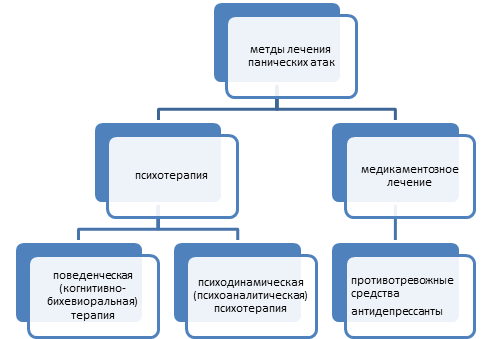
Note: should not stop taking medication after achieving a positive result, the disappearance of panic symptoms.According to clinical recommendations, antidepressants should be taken within four to six months.This approach will prevent the recurrence of the disease in the future.
Psychotherapy
Taking antidepressants eliminates anxiety and makes it possible to conduct psychotherapy. For the treatment of panic disorder, the following methods can be used:
- Cognitive-behavioral therapy;
- Hypnosuggestive therapy;
- Gestalt Therapy.
The most effective method is cognitive-behavioral therapy.This psychotherapeutic training is based on the belief that different types of behavior are formed as a result of habitual response to external conditions.And if under the influence of stress factors an inadequate, painful response model has been formed, then it must be changed.The psychotherapist helps the patient learn a new, more effective response model, respond to provoking factors adequately, without going into illness.
Psychotherapy makes it possible to find out the true cause of fear and anxiety.The task of psychotherapy is to learn to recognize and control the emotional state, not to allow the development of anxiety and fear.
Grigorova Valeria, medical reviewer



